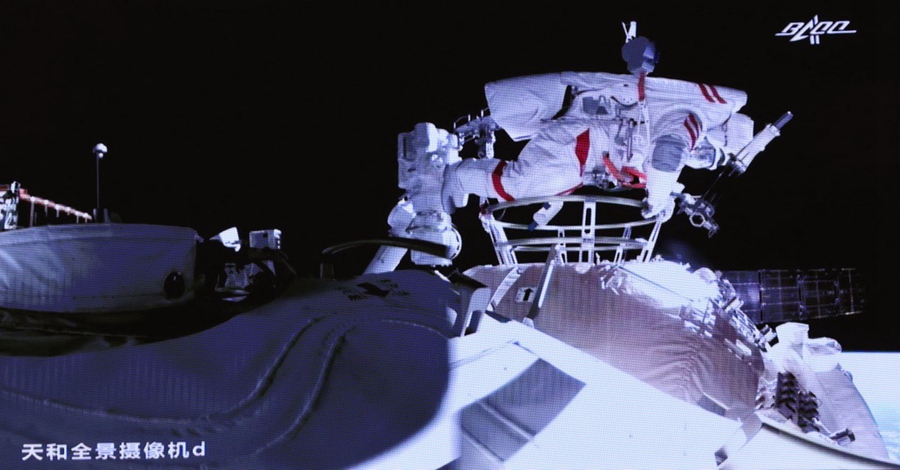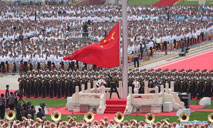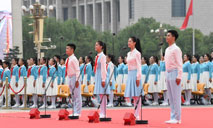Chinese astronauts step out of spacecraft on robotic arm
After conducting extravehicular activities (EVAs) for about seven hours and completing all the scheduled tasks, Chinese astronauts Liu Boming and Tang Hongbo returned safely to the Tianhe core module of China’s space station at 2:57 p.m. on July 4, according to the China Manned Space Engineering Office (CMSEO).
Crew members of the Shenzhou-12 spaceship worked in close coordination during the extravehicular operations, said CMSEO, declaring the first EVAs of Chinese astronauts during the construction of China’s space station, which were also the first EVAs of Chinese astronauts after the Shenzhou-7 manned spaceflight mission in 2008, a complete success.
Through close coordination between space and the ground, as well as between the Shenzhou-12 crew members inside and outside the spacecraft, all the preset tasks of the EVAs, including equipment installation and panoramic camera lifting, were successfully completed.
The EVAs verified for the first time the performance and function of China’s new-generation extravehicular mobility units, the coordination between the astronauts and the robotic arm, as well as the reliability and safety of related EVA supporting equipment, laying an important foundation for subsequent EVAs for the space station construction.
Developed by the China Academy of Space Technology (CAST), the robotic arm of the space station core module represents the most complicated and largest smart space mechanical system with the highest control precision among existing aerospace products of its kind.
It is designed mainly for eight major tasks in the in-orbit construction of the space station, such as transposition, EVAs of astronauts, extravehicular freight handling, extravehicular status check, and extravehicular maintenance of large equipment.
The robotic arm of the core module is 10.2 meters long when fully extended, and its maximum loading capacity is 25 tons.
It is also China’s first robotic arm that can function in orbit in the long term. With three shoulder joints, one elbow joint, and three wrist joints, the robotic arm has seven degrees of freedom of movement just like the human arm. The rotation of each joint enables it to grab things and conduct operations at any angles and positions around it, thus providing a strong guarantee for the smooth completion of astronauts’ EVAs.
The robotic arm represents one of the new fields in the development of China’s aerospace industry. Thanks to the efforts of its R&D team, China has become the third country in the world that has mastered and put into practice core technologies related to large-scale space robotic arm.
All the key components of the country’s space robotic arm are developed domestically. Besides, the country has formed multiple national standards for the space robotics industry.
Since entering the Tianhe core module on June 17, the three astronauts onboard the Shenzhou-12 spaceship have carried out work as planned and are in good condition. They will perform EVAs for another time during the subsequent orbital flight.
 |
Photos
Related Stories
- Two Chinese astronauts step out of Tianhe module, to perform spacewalk, other missions
- China's space-tracking ship back from monitoring missions
- Three astronauts enter Tianhe core module of China’s space station
- China's space station core module Tianhe completes in-orbit tests
- China's core space station module Tianhe completes in-orbit tests
Copyright © 2021 People's Daily Online. All Rights Reserved.











